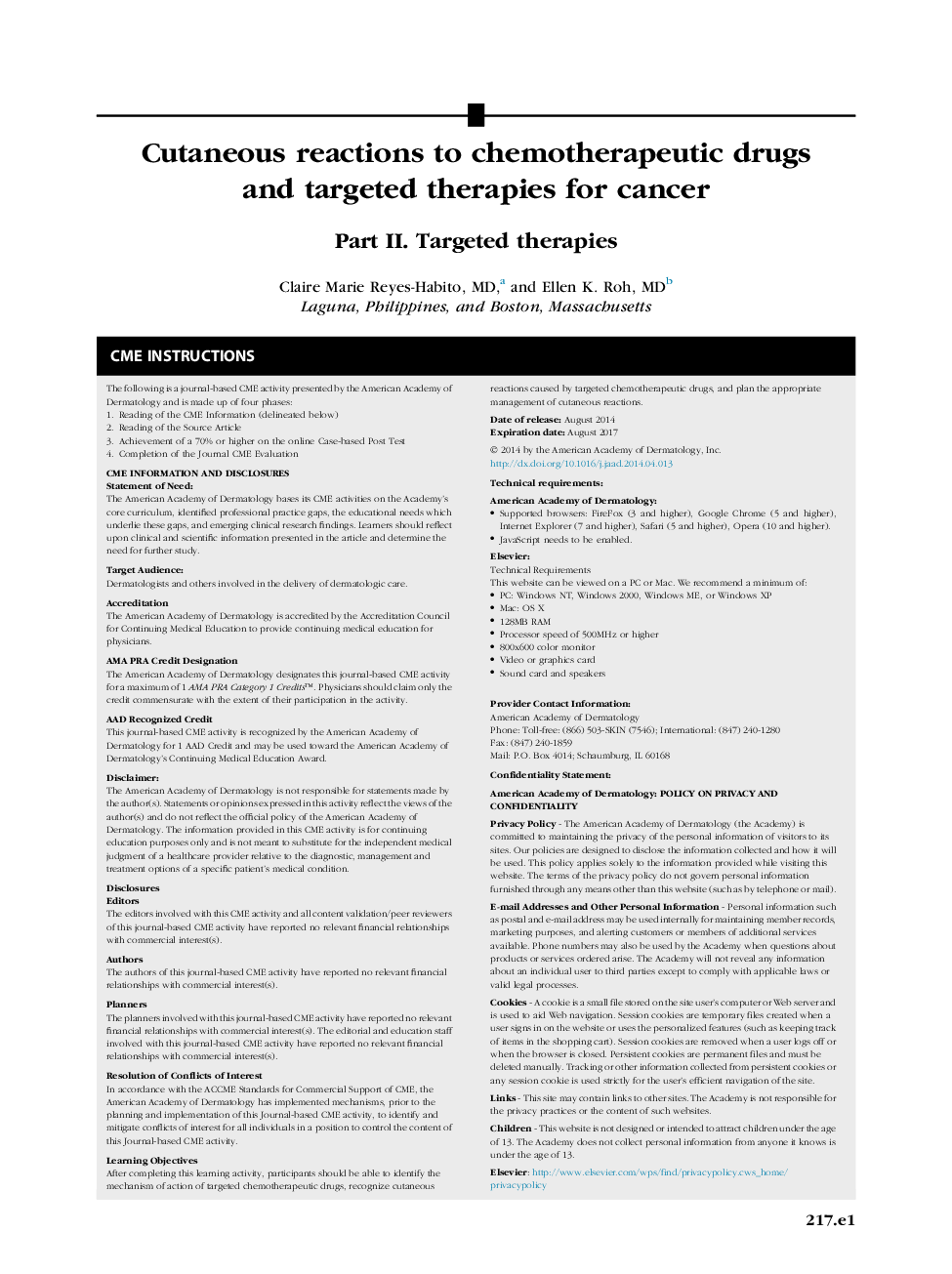| کد مقاله | کد نشریه | سال انتشار | مقاله انگلیسی | نسخه تمام متن |
|---|---|---|---|---|
| 6071260 | 1587534 | 2014 | 11 صفحه PDF | دانلود رایگان |
Targeted drugs are increasingly being used for cancer management. They are designed to block specific cancer cell processes, and are often better tolerated than conventional chemotherapeutic drugs. Cutaneous reactions, however, are not uncommon, because some target molecules are also present in the skin. Tyrosine kinase inhibitors can cause edema and macular rash, whereas papulopustular rash, paronychia, regulatory changes in hair, itching, and dryness caused by epidermal growth factor receptor inhibitors (PRIDE) syndrome can be seen in patients treated with these drugs. Vismodegib may result in muscle spasms and alopecia. Multiple rashes can be seen with bortezomib, while sunitinib and sorafenib cause hand-foot skin reactions. New melanoma therapies, such as ipilimumab, cause immune-related adverse events of dermatitis and pruritus, while BRAF inhibitors can produce exanthematous rash and lead to an increased risk of squamous cell carcinoma. Dermatologists should be aware of these new therapies and their cutaneous reactions to be able to provide appropriate care and management for cancer patients.
Journal: Journal of the American Academy of Dermatology - Volume 71, Issue 2, August 2014, Pages 217.e1-217.e11
